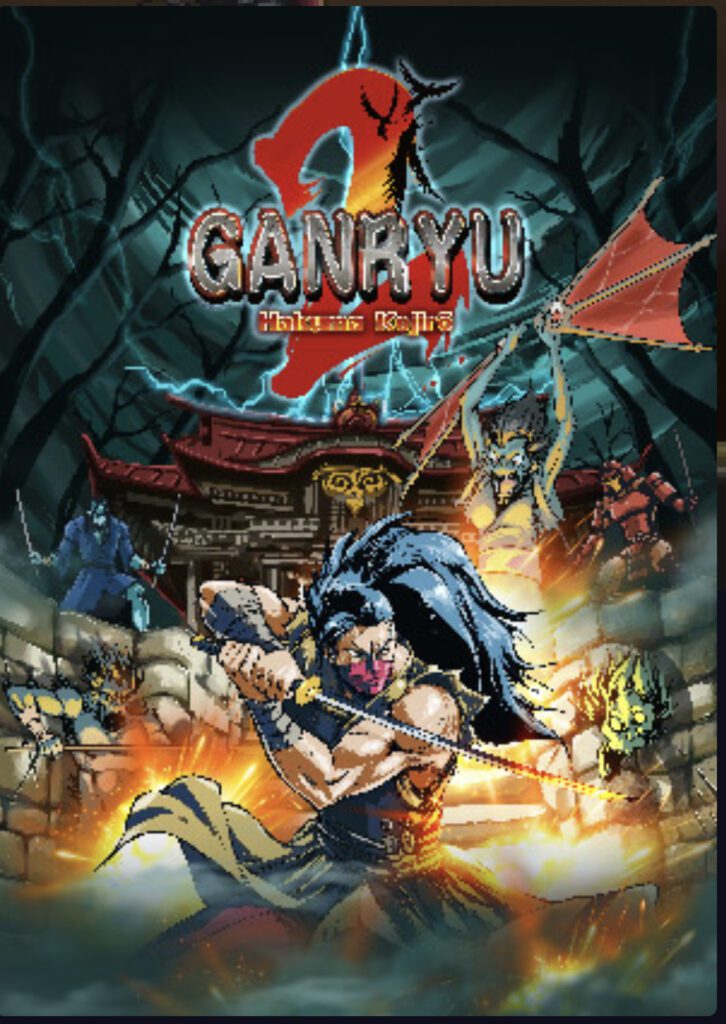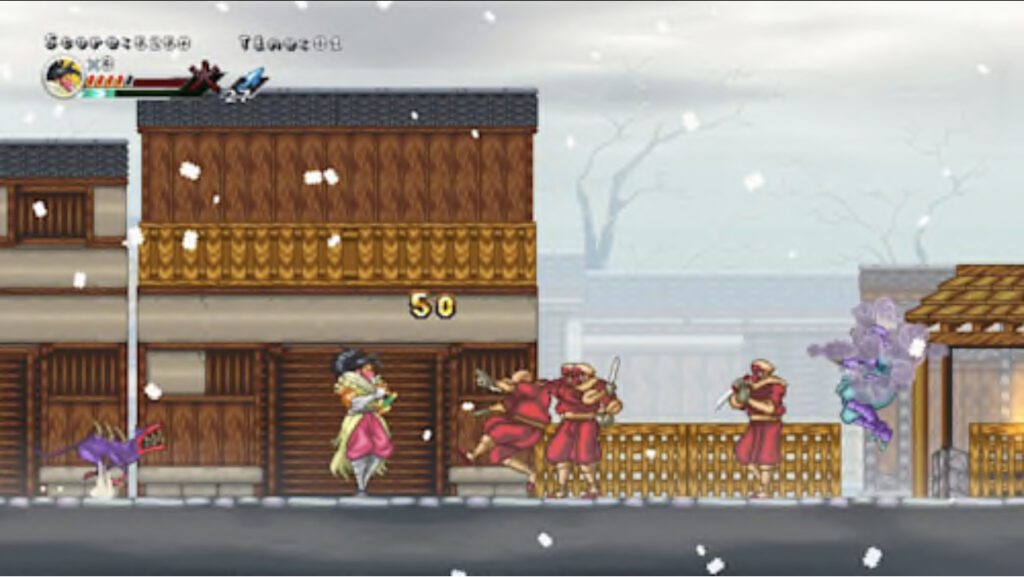Any mention of warrior -no matter the century – should bring to mind terms such as honor and courage. Facing a test or foe without any hesitation. Read up on some and you surely come upon tales of those from Japan. Disciplined and determined were these samurai, ninjas and ronin. I have been a fan of this period since I was young and attempt to approach battle in much the same way as these fighters. Of course my battleground tends to be a console but still I don’t back down. Which is a problem with my current review of Ganryu 2.
Ganryu 2 – Hakuma Kojiro
Developer: Storybird Studio
Publisher: Just for Games ; PixelHeart
Available On: Nintendo Switch, PS4, Xbox One, Steam
Opening
So far the game had me hooked. The story was slightly redundant – but with the benefit of leveraging Eiji Yoshikawa’s character from Stone and the Sword it has a legacy. The graphics pay homage to the original Ganryu which was released on NEO GEO in 1999,why would you change styles for the sequel. As the hogaku music begins to play we get a glimpse of Musashi, masked face, glaring back. The intensity of this gaze is broken by a lightning flash, while pixelated raindrops softly fall. This start screen in an arcade would have been a beacon to many a player.
Ganyu 2 continues the story from the previous game. At the conclusion of his battle with the demon Kojiro, Musashi’s time of meditation doesn’t last long. This game begins as Kojiro announces his intentions to destroy all of Japan – in response to his defeat. Now Musashi must travel across the terrain of Japan to face his foe.
Samurai Slash and Dash
After the opening, your screen displays a map of Japan. Similar to arcade games of the late 80’s your journey has several destinations for you to visit across the province of Japan. Beginning in the North, Ganryu 2 will have Musashi traveling to the Southern tip in order to finally defeat Kojiro.
In terms of style I can see Ganryu 2 as a bit of some stuff you’ve played before. Musashi, himself, reminds me of Ninja Gaiden and Shinobi, even Legend of Kage- all of which remind me of my NES days. As Musashi travels to confront Kojori you weild both a sword and daggers to defeat your foes. Daggers are consumables so go easy or be on the hunt for more – there are a lot of breakable objects offering daggers or even Lucky Cat statues. The similarities go to the stance and movement as well. Musashi, similar to Kage is a warrior who strikes lethally.
Movement wise, Ganryu 2 is like Shinobi. A slow walker, cautiously approaching his opponent while sizing them up. Musashi goes Gaiden when you use Musashi’s jump, double-jump and dash move. The burst dash will also slash through enemies. But you can also time the slash right and repeatedly dash. I found at times I was debating which strategy was the most efficient.
Now I will admit that I am not a speed runner. And while my record is at about .500, I do strive to be a completionist. I guess because growing up games had objectives you wanted to finish first. Yeah, eventually you’d get out the stopwatch but that wasn’t until the 3rd run. So when a game has items to collect I tend to go after them over finishing the game. But even at the Stage 1 start screen it is evident this is a time trial. However, right next to it is a tracker for Hanafuda, Japanese style playing cards, and the miss total. So which one do I wanna do? Also in keeping with the 80’s the AI enemies are on a track. Sorry buddy you don’t get away from me. Backtracking to stop an enemy or break a box isn’t a strategy for a speed-runner.
There was a great struggle to enjoy everything about Ganryu 2. I shifted my playing style to see if I could find a flow but I never quite got comfortable. This game does such a great job in capturing the arcade era, it just also seems to want the streaming one as well.

Score: 6.7
.


